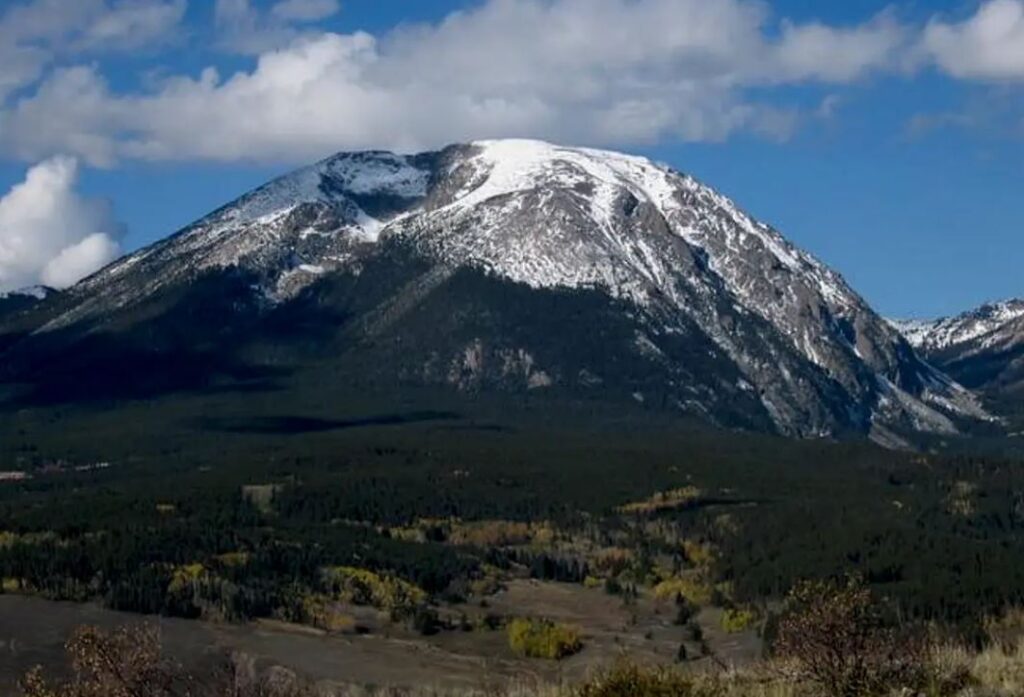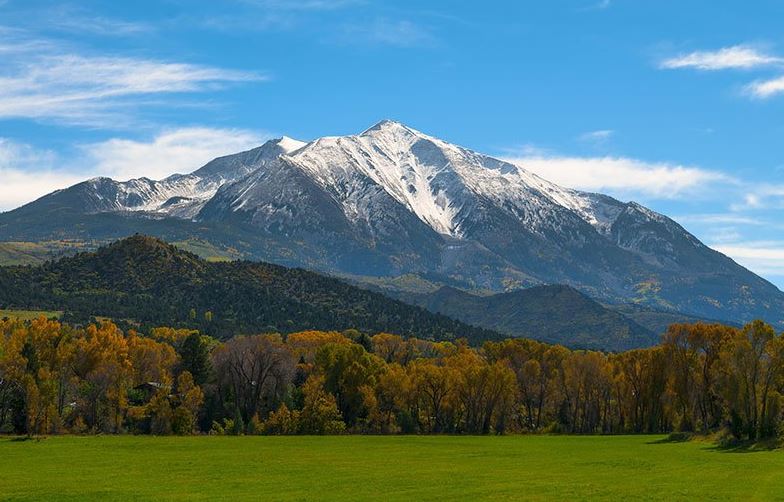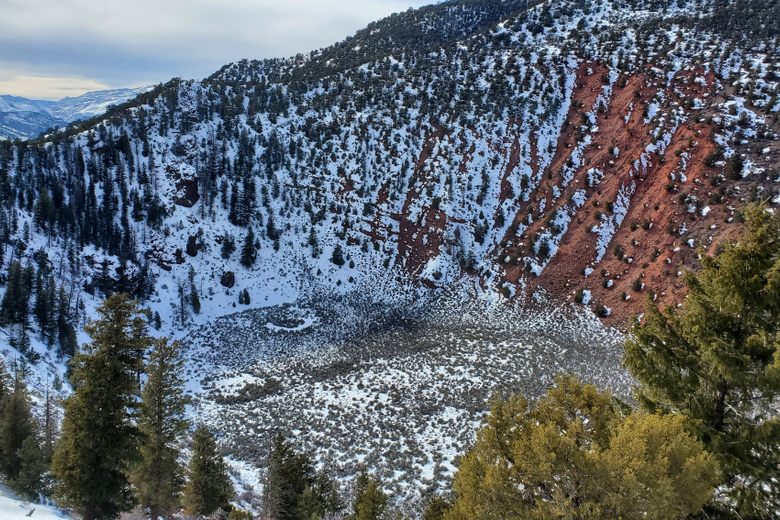Is Buffalo Mountain a dormant volcano?
Take it from geologist Garry Zabel, professor emeritus at Colorado Mountain College: no, that big, rounded, pockmarked peak never blew its top. And you’ve just got to look at the rock to know.

“It’s composed out of granite, which is an igneous intrusive rock, meaning that magma was intruded into the crust of the earth but not extruded on the surface,” Zabel tells Krystal 93. “If you get a chunk of it, it has a granite texture, meaning you can see the minerals within the sample. Normally, a volcanic extrusion of lava produces only very fine-grain rocks, so it’s a totally different rock.”
But what about Buffalo’s east face? Every last person driving west on I-70 stares at it, and those craters just below the summit sure look like something a volcano blasted.
“Those are actually due to erosion by glaciers,”
That’s right: Buffalo got its distinctive shape over many hundreds of years, not one violent, destructive moment.
“In this area we had glaciers up to about 10,000 years ago,” Zabel says. “When they advanced and retreated, they hollowed out U-shaped valleys, which can look like craters, like a Saint Helens where it exploded out of the side. But that didn’t happen.”
Professors Zabel lives in the Glenwood Springs area and Buffalo reminds him of a Roaring Fork Valley icon.
“It’s like our Mount Sopris here,” he says, referring to the 12,000-foot peak dominating the southern skyline from Glenwood to Carbondale. “Everybody knows where it is.”

OK. Buffalo Mountain and Mount Sopris are not volcanoes.
So where ARE the volcanoes in Colorado?
Zabel says there are many volcanoes dating millions of years old scattered across the state. But we’re looking for peaks that blew their tops in recent history – since humans have been here.
“We have one called Dotsero Crater,” Zabel says. “It’s on the east end of the Glenwood Canyon, and that’s a small cinder cone, and it erupted the just under 5,000 years ago.

The cinder cone at Dotsero might erupt again sometime in the distant future. That makes it the closest thing we have to an active volcano in Colorado.
For all its high peaks, Colorado is exceptionally dormant. But to travel just a few hundred miles north to Yellowstone and you’re sitting in a giant “caldera,” or volcanic crater.
“It’s a huge feature caused by many different eruptions and collapses that went on to produce this very large circular feature, miles and diameter,” Zabel says of Yellowstone.
Big thanks to Professors Zabel for clearing up the Summit County volcano rumors.

